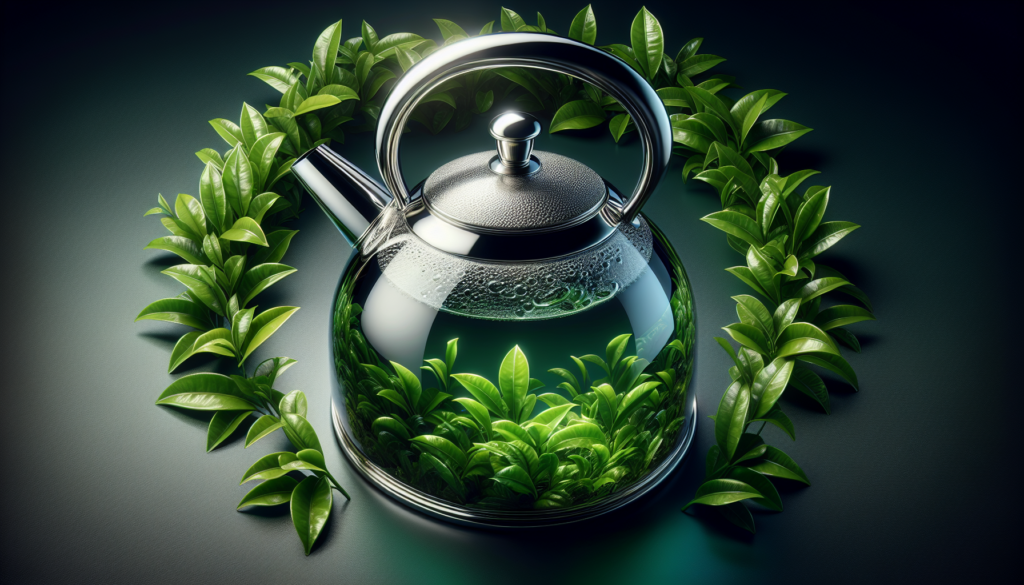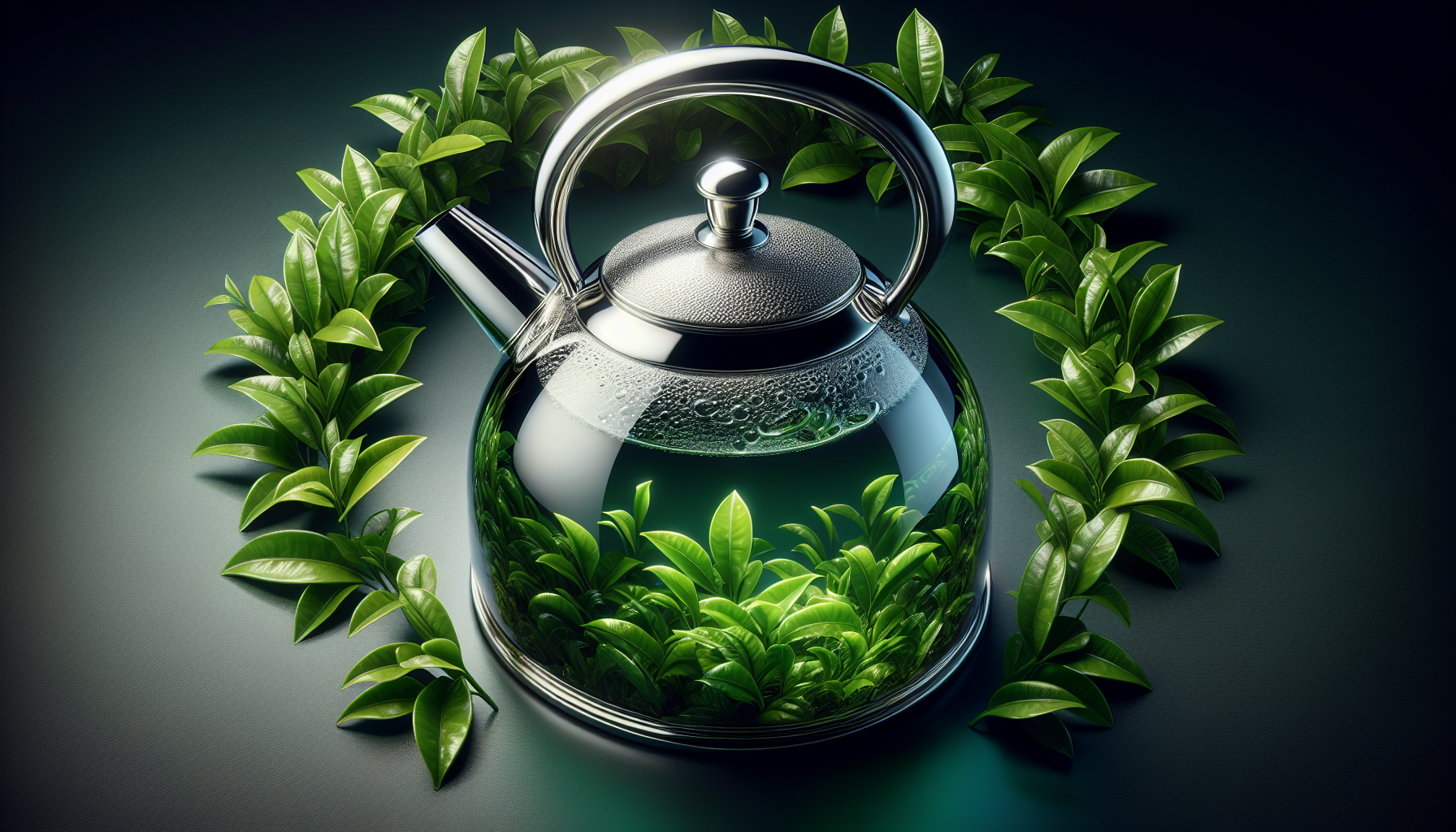In the ongoing quest for healthier living, even the simple act of boiling water for a cup of tea can become a topic of debate. That’s where the age-old question of whether a glass or stainless steel kettle is healthier comes into play. Both options have their merits, and understanding the differences between them is key. While glass kettles give you transparency and the ability to monitor the boiling process, stainless steel kettles boast durability and a sleek aesthetic. So, which one should you choose for your kitchen? Let’s weigh the pros and cons and find out.

CHECK OUT TEA KETTLES AND TEAPOTS ON AMAZON
Glass Kettle
Glass kettles are a popular choice among tea and coffee enthusiasts for their sleek and modern design. They are not only aesthetically pleasing but also offer several advantages when it comes to material composition, BPA-free options, heat resistance, transparency, and cleaning and maintenance.
Material Composition
One of the key benefits of a glass kettle is its material composition. Made from high-quality borosilicate glass, these kettles are free from any harmful chemicals like lead or cadmium, ensuring that no unwanted substances leach into your boiling water. This makes them a safe and healthy choice for everyday use.
BPA-free Option
In recent years, concerns about the health risks associated with bisphenol A (BPA) have led to an increased demand for BPA-free products. Glass kettles are an excellent option for those seeking to avoid BPA, as they are naturally free from this chemical. Unlike plastic or stainless steel kettles that may contain BPA in their construction, glass kettles provide peace of mind when it comes to your health.
Heat Resistance
Glass kettles are known for their exceptional heat resistance. With their ability to withstand high temperatures, they offer a safe and efficient way to heat water. This heat resistance also means that glass kettles are less likely to warp or crack over time, ensuring their longevity and durability.
Transparency
The transparency of glass kettles not only adds to their elegant appearance but also serves a practical purpose. Being able to see the water boiling allows you to monitor the progress and ensure it reaches the desired temperature. It also helps in preventing overboiling, saving energy and preventing unnecessary spills.
Cleaning and Maintenance
Glass kettles are incredibly easy to clean and maintain. Their smooth and non-porous surface prevents stains and residue from sticking, making them a breeze to wipe clean. Unlike stainless steel kettles, glass kettles do not require any special cleaning products or techniques. A simple rinse with soap and water is usually sufficient to keep them looking sparkling clean.
Stainless Steel Kettle
Stainless steel kettles are a classic choice that has stood the test of time. Renowned for their durability and excellent heat retention, stainless steel kettles offer several advantages in terms of material composition, BPA-free options, durability, heat retention, and ease of maintenance.
Material Composition
Stainless steel kettles are known for their robust material composition. Made primarily from food-grade stainless steel, they are resistant to rust, corrosion, and staining. This ensures that your boiling water remains free from any unwanted metallic tastes or odors, making stainless steel kettles a reliable choice.
BPA-free Option
Similar to glass kettles, stainless steel kettles also provide BPA-free options. By opting for a stainless steel kettle, you can have peace of mind knowing that you are not exposing yourself to harmful chemicals such as BPA. This makes stainless steel kettles a healthy alternative to kettles made from plastic or other materials that may contain BPA.
Durability
One of the standout features of stainless steel kettles is their exceptional durability. Stainless steel is inherently strong and resistant to wear and tear, making these kettles incredibly long-lasting. Their sturdy construction ensures that they can withstand regular use, accidental bumps, and minor falls without losing their integrity or affecting their performance.
Heat Retention
Stainless steel kettles excel in heat retention, allowing your boiled water to stay hot for a longer duration. This feature is particularly useful if you often find yourself needing hot water for multiple servings or if you prefer to enjoy your hot beverages slowly over an extended period. The ability to keep your water hot for more extended periods eliminates the need for reheating, saving time and energy.
Ease of Maintenance
Like glass kettles, stainless steel kettles are relatively easy to maintain. The smooth surface of stainless steel makes it resistant to stains and buildup, requiring minimal effort when it comes to cleaning. With a quick rinse and wipe, your stainless steel kettle will remain in pristine condition, ready to be used again.
CHECK OUT TEA KETTLES AND TEAPOTS ON AMAZON
Comparative Analysis
Now that we have explored the various aspects of glass and stainless steel kettles, it’s time to compare them in terms of their health implications, aesthetic considerations, functional factors, and environmental impact.
Health Implications
Both glass and stainless steel kettles offer peace of mind when it comes to health implications. They are free from harmful chemicals like BPA and provide reliable options for those seeking a safe and healthy way to boil water. However, some individuals may have a preference for glass kettles due to their transparent nature, allowing for visual reassurance of water quality.
Aesthetic Considerations
When it comes to aesthetics, glass kettles take the lead with their sleek and modern design. The transparent glass adds a touch of elegance to any kitchen or dining area, making them a visually appealing choice. On the other hand, stainless steel kettles have a timeless and classic appearance that complements a wide range of kitchen styles and decor.
Functional Factors
In terms of functionality, both glass and stainless steel kettles perform exceptionally well. Glass kettles excel in their heat resistance and transparency, allowing for precise monitoring of water boiling. Stainless steel kettles, on the other hand, shine in their durability and excellent heat retention, ensuring that your water stays hot for more extended periods.
Environmental Impact
Glass and stainless steel kettles have a minimal environmental impact compared to plastic kettles. Plastic kettles often end up in landfills, contributing to plastic waste and pollution. Glass and stainless steel are recyclable materials, making them more eco-friendly choices. Moreover, their durability means they can be used for many years, reducing the need for frequent replacements and further reducing waste.
In conclusion, both glass and stainless steel kettles offer their unique advantages. Glass kettles are a stylish and safe choice that provides exceptional transparency and ease of cleaning. Stainless steel kettles, on the other hand, are renowned for their durability, heat retention, and timeless appearance. Ultimately, the choice between the two will depend on individual preferences, prioritizing health concerns, aesthetic preferences, functionality requirements, and environmental consciousness. Whatever your choice may be, both glass and stainless steel kettles offer a reliable and enjoyable way to brew your favorite hot beverages.

